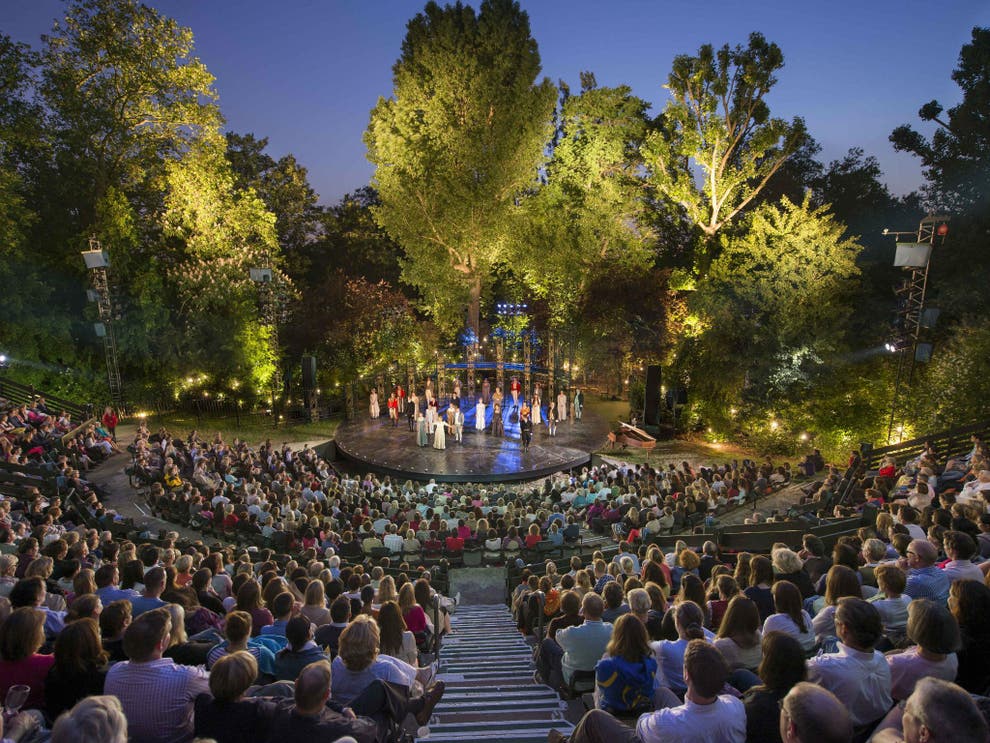Bringing the outdoors indoors: theatres, galleries and Covid
After the brutal cold snap of the past few weeks, the UK is finally seeing some of the first glimmers of spring – truly a thrill to anyone else who can’t stand the winter months. This year, especially, people are rejoicing in the thought of warmer weather. The third lockdown has seen reduced morale and mood, with the lockdown of last summer’s outdoor events impossible to replicate due to further restrictions and sub-zero temperatures. With galleries and theatres remaining closed for the foreseeable future, questions are being raised about whether they will be adapting their offerings to outdoor spaces as the weather warms up. After a year of lockdowns and social distancing, many institutions have had the chance to create somewhat more secure plans, in contrast to the ad-hoc scrambles of last summer; but how feasible are these plans in what remains a constantly changing set of restrictions? And looking ahead, what’s in store for indoor galleries and theatres?
With galleries and theatres remaining closed for the foreseeable future, questions are being raised about whether they will be adapting their offerings to outdoor spaces as the weather warms up
Some venues are already set up for open-air events; outdoor galleries of stately homes are available for you to get your sculpture fix, while venues such as Regent’s Park Open Air theatre are planning to go ahead with their summer seasons. However, precautions will still need to be taken in terms of social distancing, something that will surely be worrying those handling the financial side of things. Even if venues are able to adapt to an outdoor setting, audience capacities will be greatly diminished, leading to an inevitable reduction of profits. The cost of staging a theatrical production can be extremely high, and with the government still neglecting arts funding, the price of putting on productions and exhibitions for smaller groups may be too much for some companies.
Since last summer’s closures, some theatre companies have taken fairly drastic actions in their game-plans. The Arcola theatre in London has submitted plans to build a new theatre built with social distancing in mind, designed to be used as a “pop-up” venue for up to three years. The time scale here may seem pessimistic, but after constant uncertainty and hollow promises, perhaps erring on the side of caution is the pragmatic path to take. This also raises questions about the future of indoor theatre spaces once they can open. Will people be comfortable heading straight back to sitting in close proximity to thousands of strangers, or will theatres continue to suffer the consequences of the pandemic even after it’s over? It may be that outdoor productions are the most practical way to go – for the foreseeable future at least.
Will people be comfortable heading straight back to sitting in close proximity to thousands of strangers, or will theatres continue to suffer the consequences of the pandemic even after it’s over?
As theatres move outside, art galleries are also having to change how they showcase their collections. Last year, many were able to open successfully with social distancing measures in place; timed tickets and careful monitoring of how many people were in each room allowed galleries to remain open to a reduced number of visitors. However, this winter’s tightening of restrictions meant that doors were locked tight once again. At the moment there doesn’t seem to be a chance of galleries opening any time soon, but with the vaccine rollout going well and infection rates on a promisingly downward trajectory, we can at least hope that by the time summer comes along there will be at least some access to seeing indoor art spaces up-close and personal again. In the meantime, many are taking advantage of more local art offerings. I’m lucky enough to live in an area that has heavily invested in street art – wherever you turn, another incredible mural has appeared, as if overnight, on the side of a building. There’s definitely been a noticeable increase in art that’s suited to an outside setting by nature, but smaller, local galleries have also adapted so as to keep running. The Frank Ison Space in East London, for example, has adjusted all its recent exhibitions to window-only displays, allowing visitors to enjoy the exhibits on their daily walks. While it’s certainly not the same as wandering the sculpture gallery of the V&A or investigating the Tate’s latest offerings, for now at least we’ll have to make do with what we can get.
It’s certainly harder to imagine a return to anything resembling normality anytime soon; outside might be the way to go
Is bringing the indoors outdoors the future for theatres and galleries? At the moment, it’s hard to say. While galleries may be able to adjust their spaces for social distanced exhibitions, in the case of theatres, it’s certainly harder to imagine a return to anything resembling normality anytime soon; outside might be the way to go. In any case, we’re sure to see some interesting innovations in the coming months as the arts continue to adapt during this highly uncertain time.

Comments